UPP
If you thought the complex effects simulations, character, modelling, animation, lighting and rendering capabilities of Houdini were limited to big-budget blockbuster films, think again. A whole raft of Houdini work is done in other areas, too, including in commercials.
One studio leading the charge is Universal Production Partners (UPP) based in Prague. It has both film and commercials divisions, and in commercials UPP has been at the forefront of Houdini usage. Here’s a look at just some of the studio’s projects, and how and why Houdini was used in them.
UPP’s commercials reel.
HOW Houdini is used at UPP
In commercials, Houdini forms part of the UPP’s main 3D pipeline, and is fully integrated with other software packages. “We often create assets, caches or geometries in Houdini that are then sent through Alembic, VDB or ASS files into Maya or vice-versa,” outlines Mario Dubec, UPP’s VFX supervisor and head of 3D in the commercial department.
“UPP’s 3D operators fully utilize both Houdini’s Mantra and Autodesk's Arnold renderers. Our 3D lead artists always estimate the fastest software for creating a specific effect and try to bridge the Maya and Houdini operators as much as possible in order to have the team fully scalable for the particular project’s needs.”
The splashes and glass in this spot for Road Safety in Russia relied on Houdini.
Specifically, Houdini is used at UPP for simulations and building complex procedural scenes. “We were looking for a complete package for all kinds of simulated effects,” says Dubec. “Also with more work created in Houdini, we are encouraging our lighting artists to use Houdini Mantra and thus making Houdini as the last software in line. Thanks to the progress of Houdini fur and crowd tools we are now also researching and developing furry and feathery animals/creatures and crowds directly within Houdini.”
WHY Houdini is used at UPP
UPP’s decision to take on Houdini arose from the need to include many simulated effects in their commercials. The studio had previously relied on other tools such as Maya, XSI, RealFlow and Naiad. But, as Dubec relates, “we were constantly looking for alternative solutions. We knew about SideFX Houdini and its features. So when the challenge of creating a fully CGI ocean storm and CGI clouds for an Indonesian Dji Sam Soe spot came our way, we decided to give it a try. And although it was a risk, as it was a completely new tool to our artists, it didn’t let us down. Since then, we did many other particle effects and simulations in Houdini.”
It was a completely new software environment but the node-based, non-destructive procedural logic was very intuitive to work with and quickly we started achieving desired results.
Mario Dubec – UPP’s VFX supervisor and head of 3D in the commercial departmentThe Dji Sam Soe spot.
That Dji spot involved a live action bluescreen studio pool shoot, and then an extensive CG ocean and storm build. UPP “dedicated our enthusiastic artists to research capabilities of Houdini and our former Naiad artist as developer of FLIP simulations and integrations with procedural ocean surfaces,” says Dubec.
“It was a completely new software environment but the node-based, non-destructive procedural logic was very intuitive to work with and quickly we started achieving desired results - also, thanks to the fact that our artists were used to work with many other node-based 3D software tools. Later, generating many shots parallel and rendering them with Mantra while sharing setups, assets and settings was with Houdini quite an easy task.”
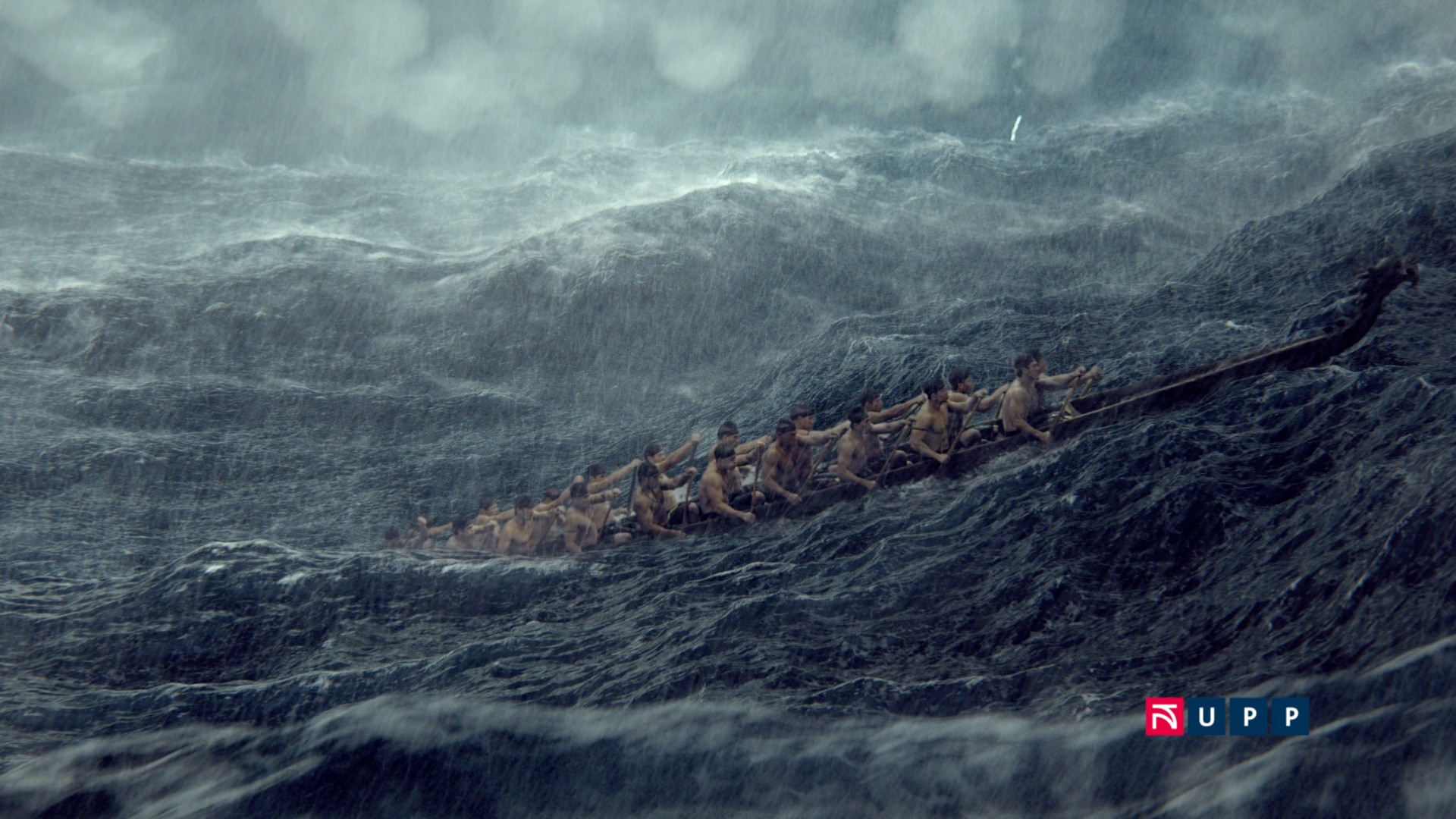
A still from the Dji Sam Soe commercial, showing UPP’s wave sims.
Houdini in Commercials vs Film
“What is similar to film,” adds Dubec, “is that each advertising campaign brings us new tasks, new effects, new ‘problems’. UPP needs to rely on tools, which help us overcome obstacles we encounter. Although specialised tools are helpful and fast for one task and we often use them even in our department with our advanced Houdini artists and technical director on our team, we often find a fast solution directly within Houdini.”
The size of projects in advertising differ wildly. There is often the need to scale quickly and work in parallel. UPP has been keen to use software, like Houdini, that can scale and do many different things. “An all-in-one software is often more appreciated than using many specialized pieces of software,” says Dubec.
This Jim Bean Citrus High Ball commercial, which stars actress Mila Kunis, made use of Houdini for the ice effects.
“A very important aspect is also reliability,” continues Dubec, addressing the specific requirements of the advertising world. “UPP always keeps the deadline as the utmost priority. Thanks to our long years of experience dealing with CGI, we can foresee problems or complications in a specific job and help the client achieve the results they require. However, sometimes you cannot avoid a problem, sometimes you just need to solve it. Thus, we at UPP need to have alternative paths to our goals and get quick answers to our questions. Houdini and its development team allows for both.”
Houdini case study: Nissan Kicks
Highlighting where UPP is ‘up’ to in its use of Houdini, the team recently produced some stunning visual effects work for a Nissan Kicks commercial. The brief was a ‘I am Legend’-type landscape that would require several augmented digital environments and CG destruction, debris and other digital assets. This all had to be completed in record time.
Our team got a bit more than two weeks time from the offline to create the CGI sequence of a car blasting through the barricade - in time-ramped slow motion - and generate enough debris and crumbling concrete plates for the buildings in other shots. Knowing this, there was no other option but to fully utilize Houdini, including Mantra volume rendering.
Mario DubecBehind the scenes of the Nissan Kicks commercial.
“Our team got a bit more than two weeks time from the offline to create the CGI sequence of a car blasting through the barricade - in time-ramped slow motion - and generate enough debris and crumbling concrete plates for the buildings in other shots,” recalls Dubec. “Knowing this, there was no other option but to fully utilize Houdini, including Mantra volume rendering.”
Dubec notes that the procedural workflow of Houdini provided UPP with enough flexibility to complete the project. “UPP wanted to offer to the clients the possibility to change the barricade look until the last moment, adding elements and obstacles while developing the style of simulations, mostly using stand-in objects during the look development phase. And all this independent from FPS to keep the possibility for time-ramping later. We ended up with multiple layered simulations of rigid bodies, deformations of barrels, Voronoi shattering of wood and concrete, splitting metal chains, simulated smoke, dust, gravel and sparks in contact points.”
Stills and renders from the Nissan Kicks visual effects work by UPP.
As indicated, Mantra was a big part of getting the spot done. Dubec says the studio takes advantage of the renderer being completely integrated within Houdini. “Another positive aspect,” Dubec suggests, “is the fact that it ‘forces’ lighting artists to build IFDs instead of sending raw scenes to the farm. This subsequently makes artists optimise the way they build lighting scenes by packing geometries, using rat textures et cetera, resulting in a cleaner setup. Also, style sheet workflow is for a completely procedural scene a must. This allows us to create look variations of a procedural crowd with an ease. And another advantage is the fact that neither Mantra, nor its shaders, are a black box and you can anytime access and change the core of it.”
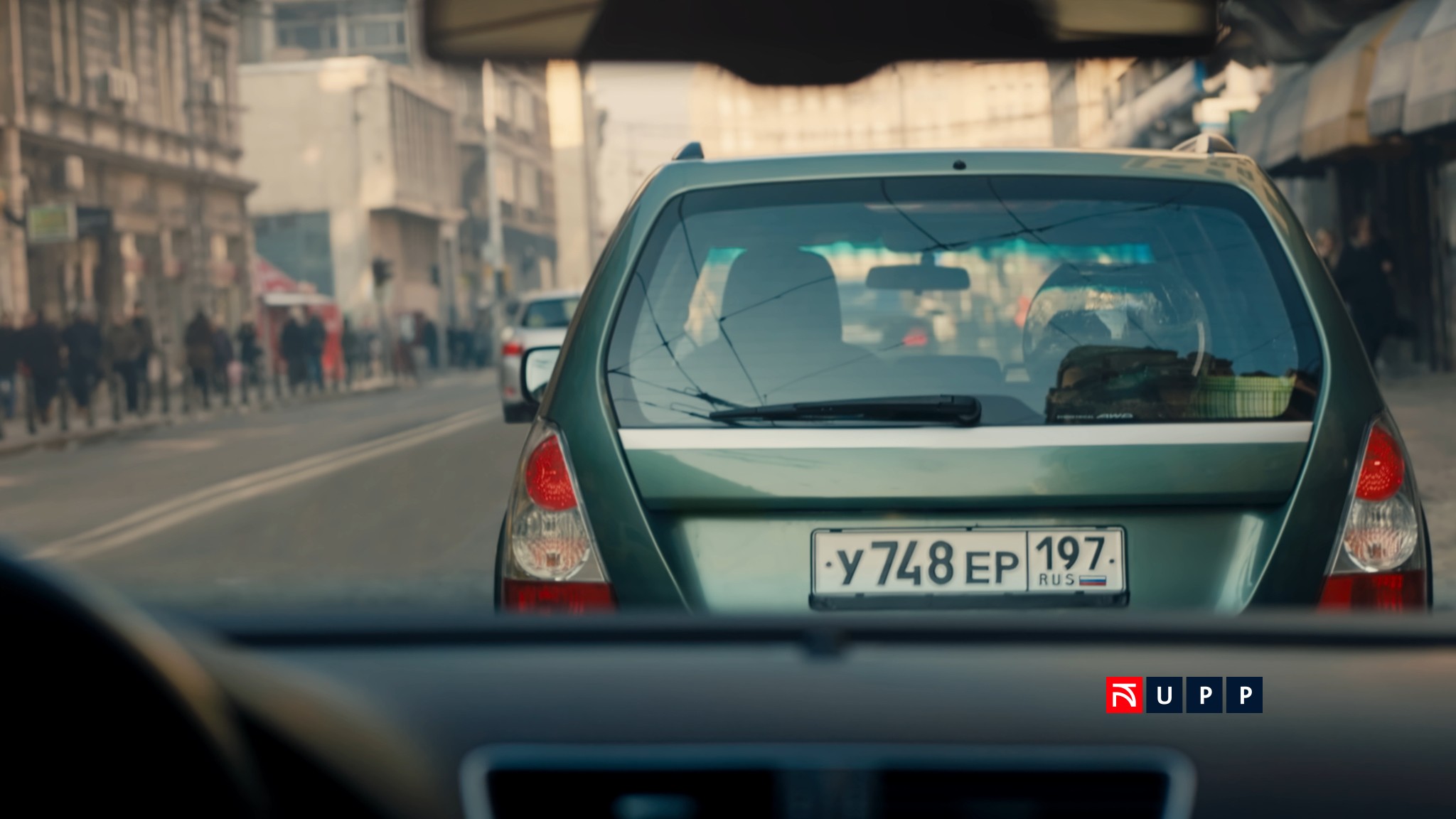


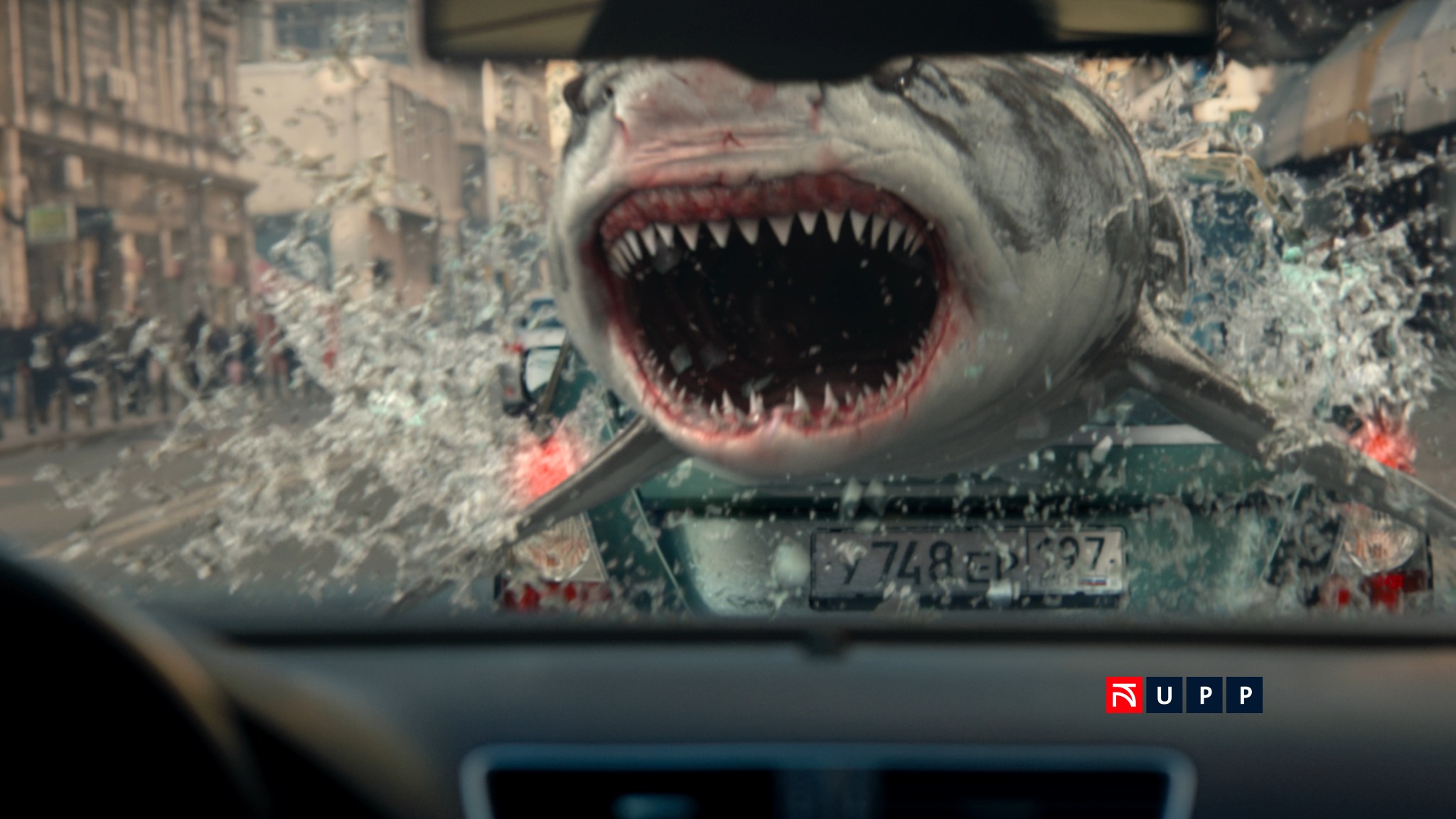

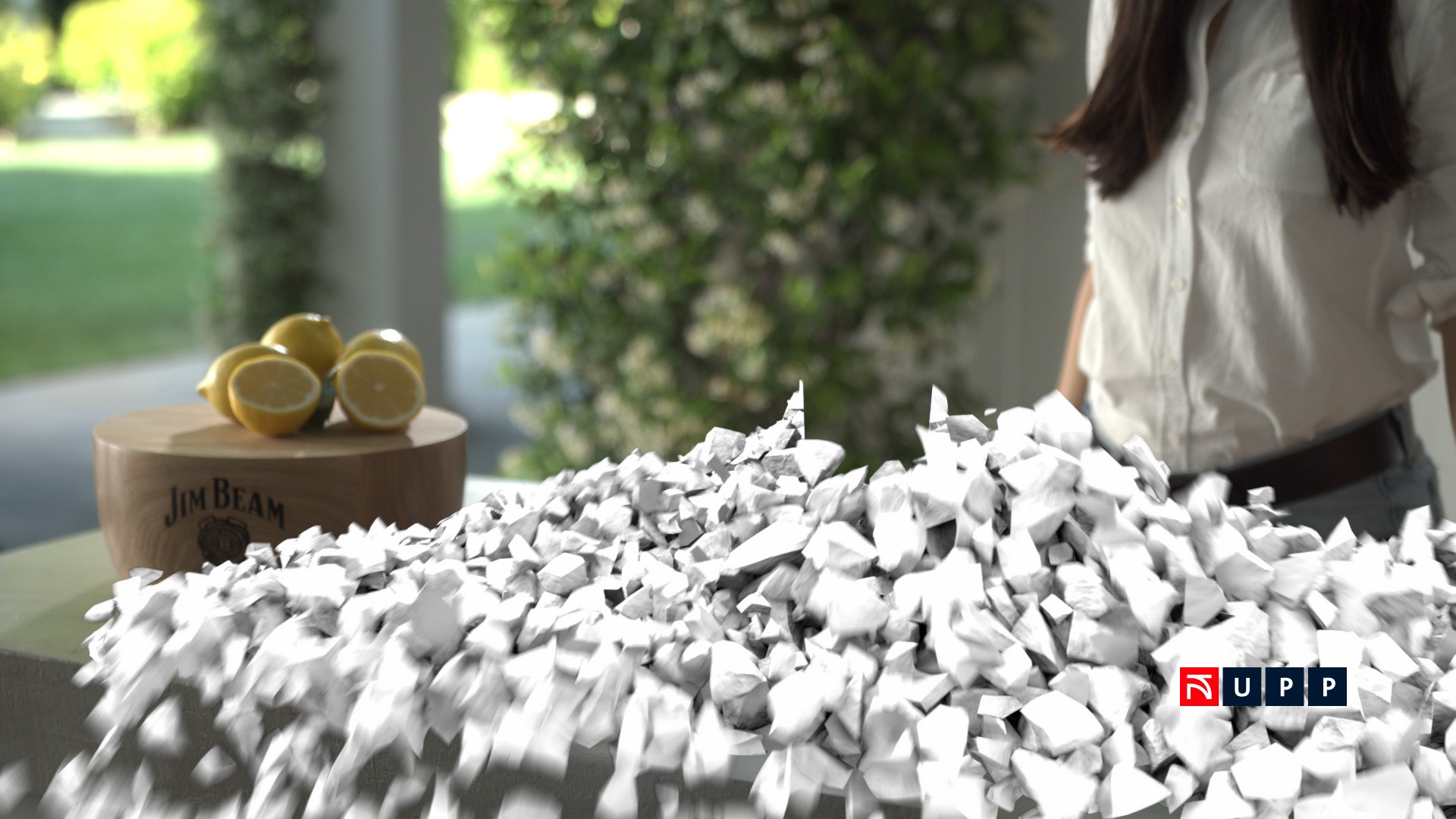
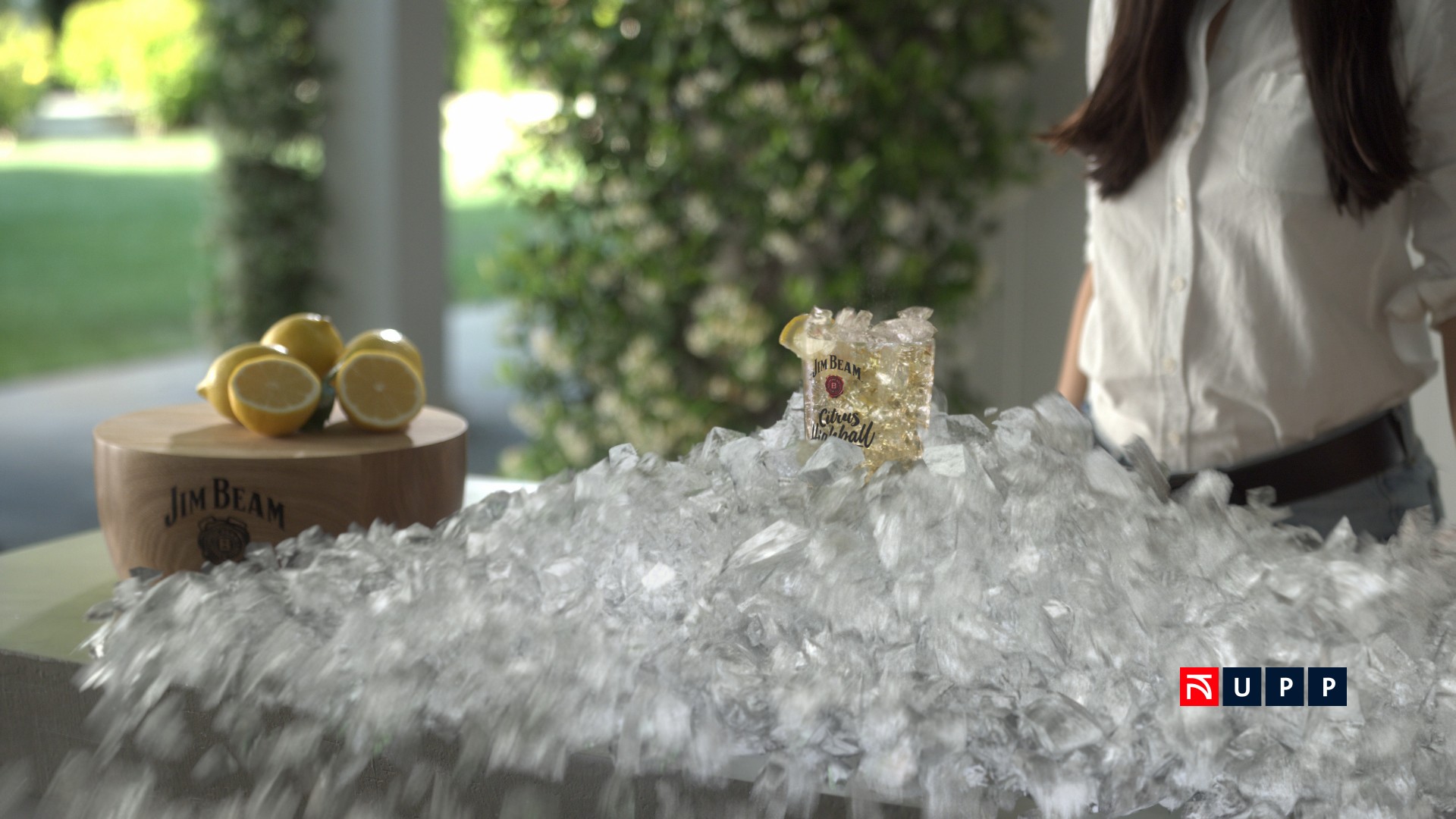

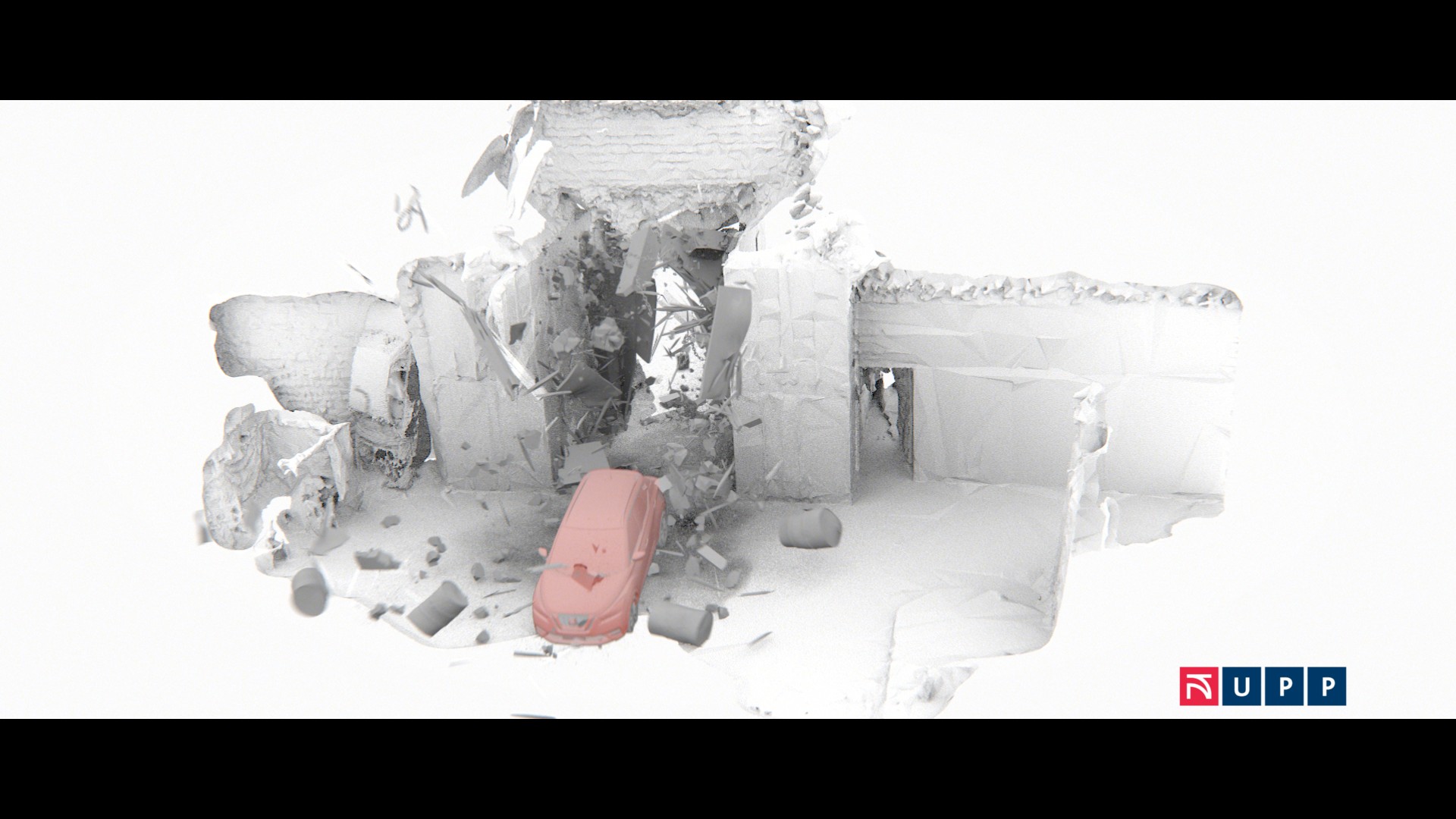
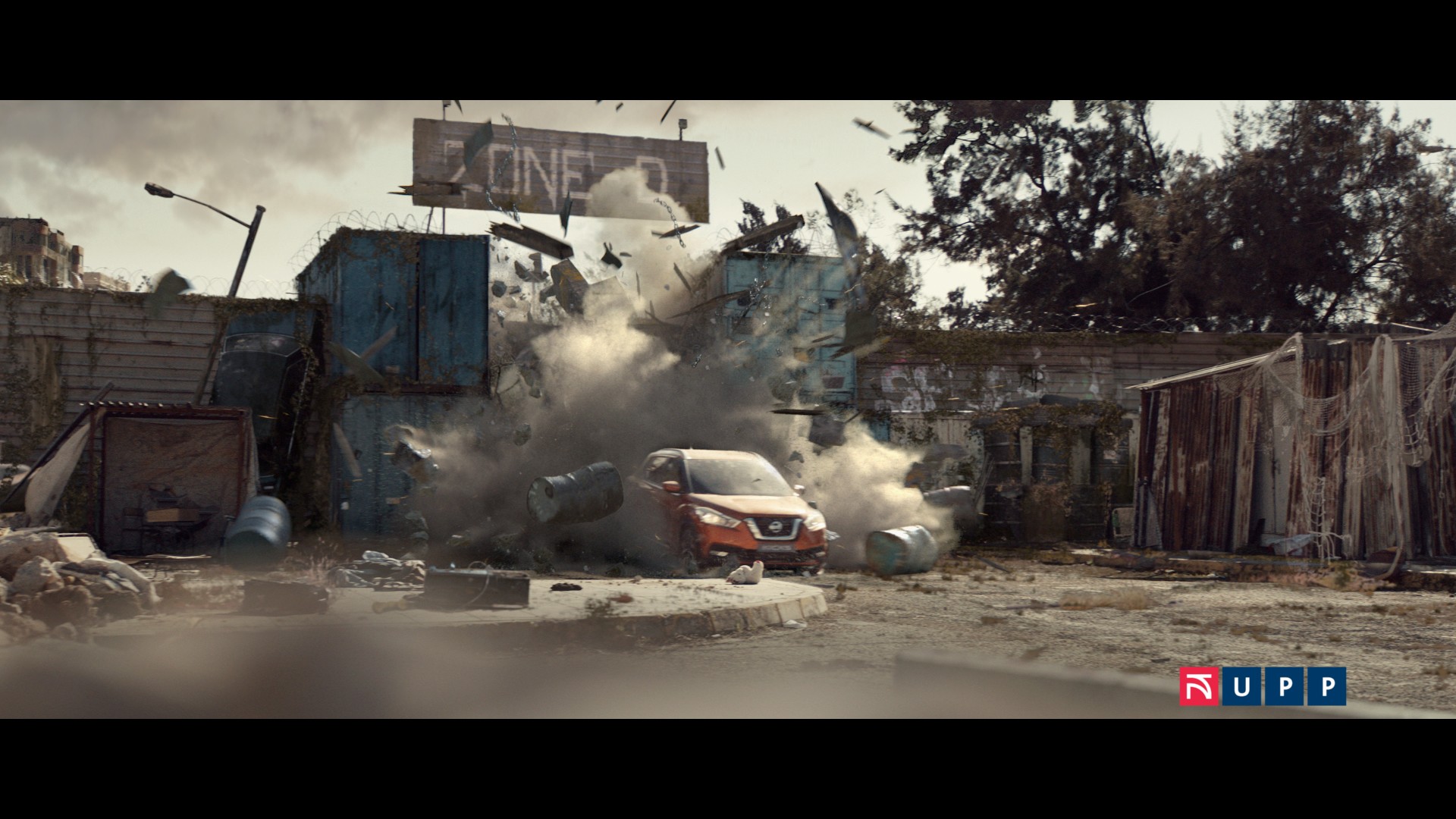
COMMENTS
Please log in to leave a comment.